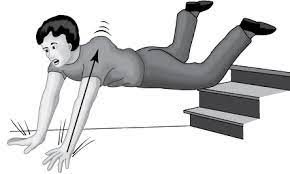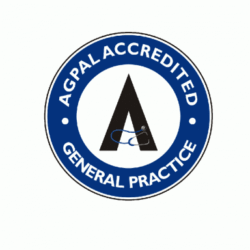
Falls on the outstretched hand are common. A low impact fall on the hand in a young person without significant health conditions is unlikely to lead to any serious injury. A high impact fall on the hand (i.e. fall 2 meters, fall from riding a bike) is more likely to lead to injury. A fall on the hand in an older person or a person with chronic health condition such as osteoporosis is also more likely to lead to injury.
Injuries can occur anywhere in the arm. This might be fingers, wrist, forearm, elbow, shoulder or collar bone. Injuries include broken bones (fractures), dislocations, open wounds, and certain important ligament & tendon injuries such as skier’s thumb (ulnar collateral ligament injury of thumb) and mallet finger.
If there is significant pain, swelling, open wound, bleeding or deformity there may be a significant injury. It is recommended in these circumstances to be reviewed by a doctor. This might be either a GP or attending an emergency department.
First aid treatment involves:
– removing any rings from fingers if possible. If the finger swells the ring can get stuck and the finger could be injured from reduced blood supply. If it is difficult to remove, get assistance from your doctor or emergency department.
– applying a sling to keep the arm or fingers still – very important if you think there is a fracture.
– applying a bandage or dressing to any open wound.
– elevation and gentle compression of any bleeding wound. An elevation sling may be helpful or the person can hold their arm up provided the shoulder, upper arm, elbow or forearm is not fractured. Gentle compression with fingers over a bleeding wound may also help, but don’t compress too hard in case there is a fracture underneath.
St John’s Ambulance has an excellent video on how to apply slings: https://www.youtube.com/watch?v=PwfBGkBXkFA
X-rays are very valuable tests and your GP or emergency department can arrange these for you. X-rays will show most fractures. Certain fractures such as scaphoid fractures are often missed on initial X-ray. If there is significant pain your doctor will discuss with you either resting your hand / arm and returning for reassessment if persisting in 7-10 days, or obtaining advanced scans such as a CT scan. Resting the hand or arm may mean time away from sport or modified duties at work and home.
Scaphoid injuries are good for patients to know about and can occur with a fall on an outstretched hand. The scaphoid bone is a bone in the wrist close to the thumb. It has a vulnerable blood supply and is important in wrist stability. If a scaphoid injury is missed and not managed properly the bone can die and lead to chronic arthritis and wrist instability. For this reason if your GP assesses you and a scaphoid injury is possible, your GP will discuss keeping your wrist and thumb immobilised with either a half plaster (called a thumb spica back slab) or splint. These need to keep both your wrist and base of your thumb still. Reassessment in 7-10 days or advanced scans can then be considered.




